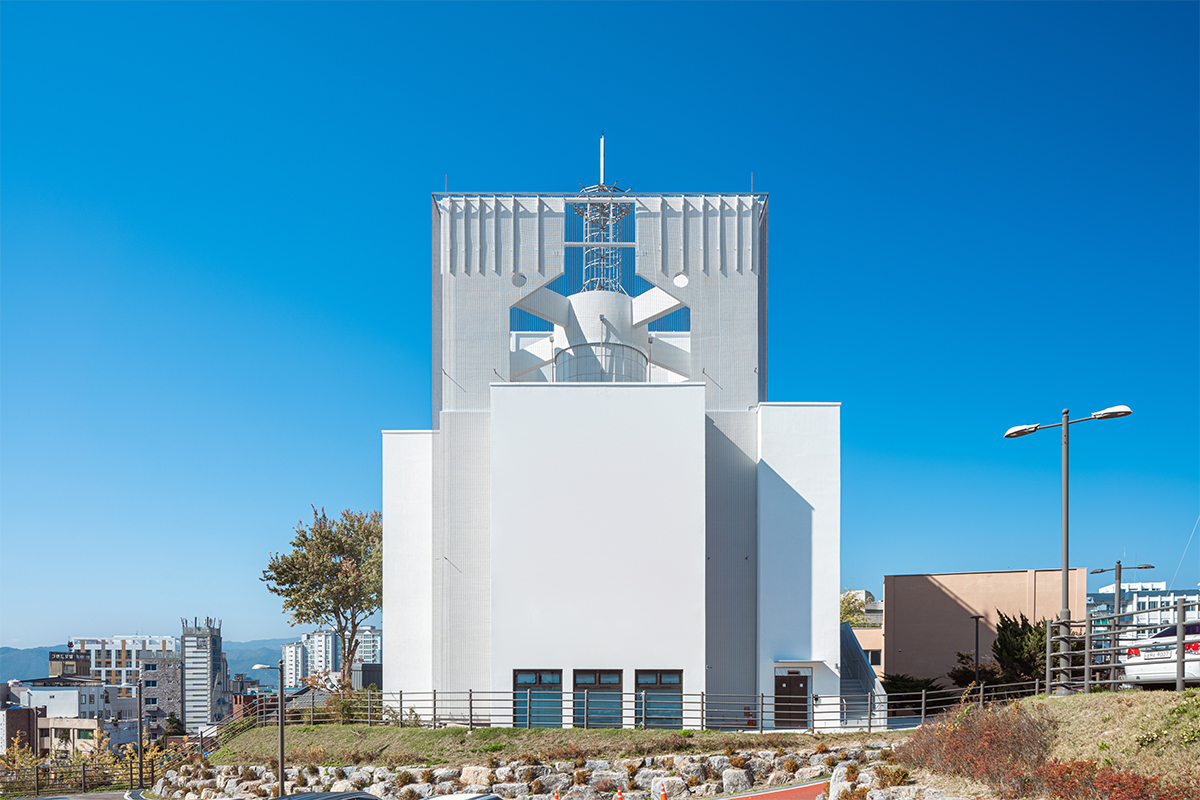
Bomnae Theater in Memory of Chuncheon Citizens
‘Bomnae’ is an archaic word for Chuncheon. Bomnae Theater was a performance arena that long played a symbolic role in Chuncheon. This building was built in 1970 as Chuncheon Central Methodist Church (now Chuncheon Methodist Church), the oldest church in Chuncheon. When the church building and its annexes were purchased by Chuncheon City in 2000, it was renamed Chuncheon Art Plaza. Since then, it has been used as a cultural space frequented by citizens for various performances, but improvement was inevitable due to safety issues and difficulty in facility use, as it was rated as a class D in safety inspection in 2017. For the conservation of the historical value of the building, the local government chose to remodel rather than develop a new structure. The decision was taken to raise the safety rating through structural strengthening and to preserve the symbolic wall decoration. Bomnae Theater was to be renovated by placing an emphasis on the restoration of historical value and sense of place as a modern urban historical and cultural heritage in the memory of Chuncheon citizens.
Connections to Surrounding Contexts and the Improvement of Outdoor Space
The site is located in the downtown district of Chuncheon, to the south of Bongeusan Mountain with winding Soyanggang River. There are many places of historical and cultural value near Chuncheon Art Plaza, which is sandwiched between Gangwon Provincial Office and Chuncheon City Hall, and Jungang-ro and Myeong-dong, Chuncheon’s commercial centres, are also very close to the site. The three main buildings, Chuncheon Art Gallery, Chuncheon Creative Studio, and Bomnae Theater were all built around the 1970s. Establishing a close relationship with Chuncheon Art Gallery and Chuncheon Creative Studio as well as nearby sites of interest, we explored ways of using the Bomnae Theater fully in terms of its spaces and programmes rather than just accommodating its surroundings. In addition, it was understood that the potential of the site would only be enhanced by maximising accessibility and a public facing aspect by improving the outdoor spaces on site, and improving circulation so as to support its role as a cultural performance facility.
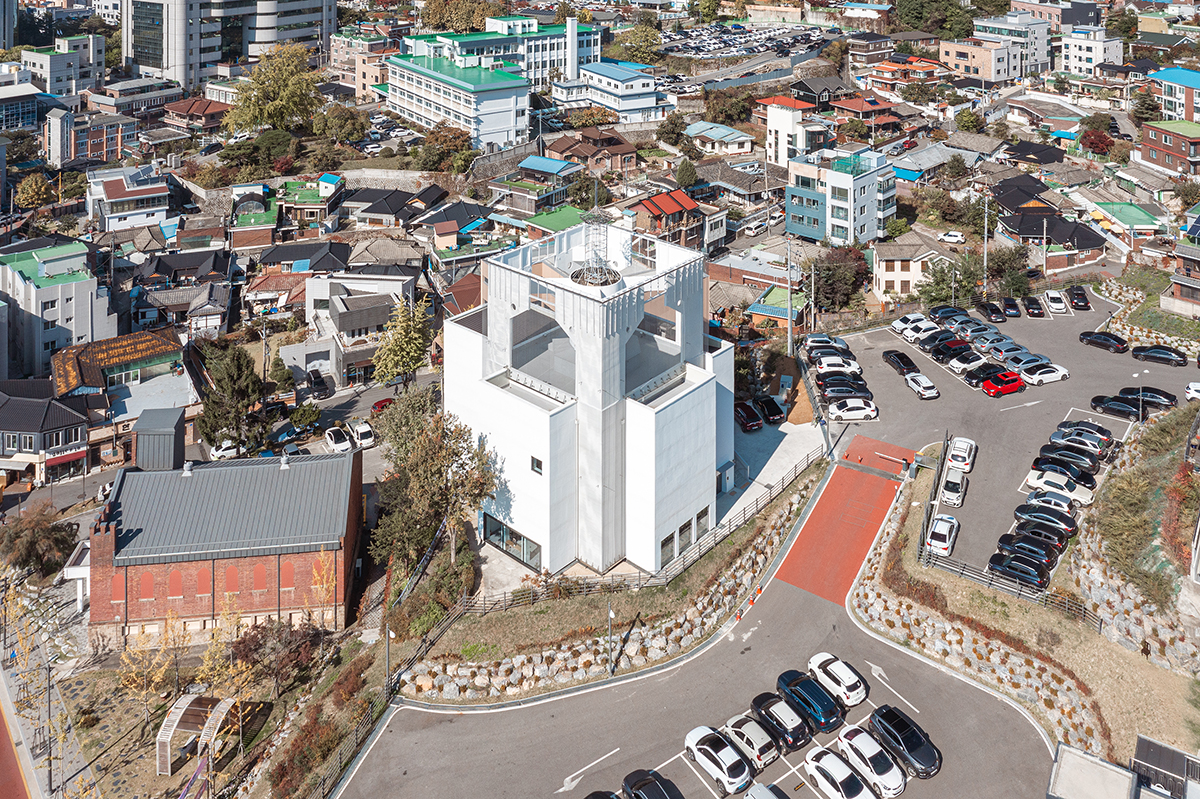
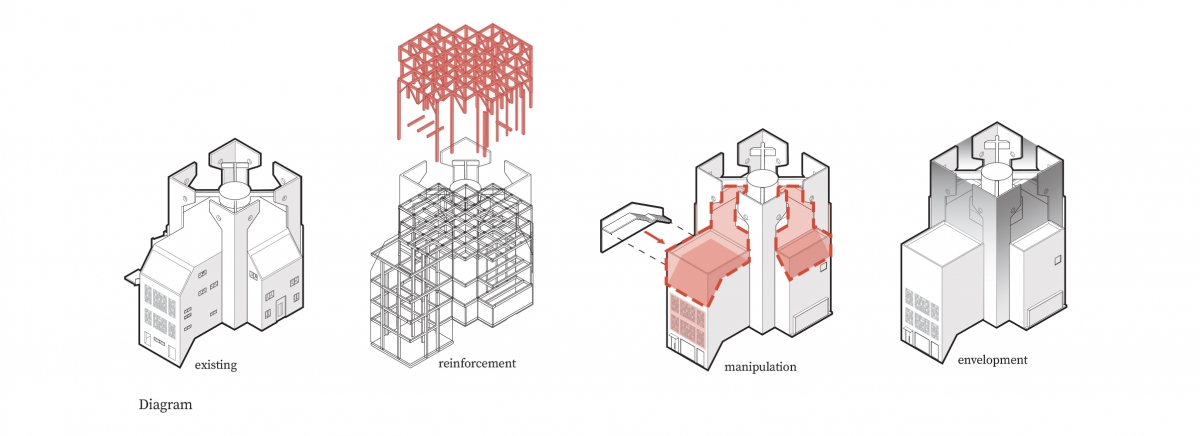
Reasonable Structural Reinforcement and Exterior Remodeling
In order to improve the structural safety rating of Bomnae Theater from class D to B, we applied slab reinforcement, strengthening of RC beam with steel plate, and steel frame reinforcement to the existing structure. This enabled us to change the internal structure more freely by reducing the structural instability of old bearing walls and concrete columns. In particular, the roof required the installation of rigging beams for the stage and the reinforcement of the supporting structure by adding catwalks, a stage sound system and lighting fixtures. A gable-roof protruding in all directions of the existing building was demolished and the height was increased to form a flat roof to secure additional heights for the entrance and theatre partially, and we also changed the size of lower mass to improve its relationship with a penthouse which was too large for the building and to harmonise with its surroundings. White stucco was used as the general exterior finishing material to pursue visual expansion and underscore the simplicity of the building, and the colour of the symbolic wall decoration on the existing façade was changed to create balance while its shape was maintained. The decoration
on the rooftop, the defining mark of the Bomnae Theater, is kept in respect of the design meaning, but metal fabric finish is added to the front to give a modern feeling.
Vivid and New Performance Space
Peter Brook, the director who took the lead in the construction of the Royal National Theatre, said, the science of theatre-building must come from studying what it is that brings about the most vivid relationship between people. Bomnae Theater project is a remodeling project that transformed a space that was not a theatre into a theatre by applying the concept of a theatre space known as ‘found space’. Therefore, we wanted to propose a vivid and new theatre space rather than the simple renovation of an old theatre. In terms of the stage production and audience, the existing Bomnae Theater required reinforcement of its facilities to support various staged performances, from concerts to puppet plays, in terms of the production space, and a rearrangement of seating to improve the distance and intimacy between actors and audiences in terms of viewing space. A viewing angle of C-Value 90 grade for all seats was secured by changing the seating from three tiers to two tiers, establishing an intimacy between actors and the audience by decreasing physical distance. In addition, the combination of fixed and movable seats allows audience to experience a shared vision by exchanging various emotional elements such as sounds and movements in a space of ‘see’ and ‘be seen’.
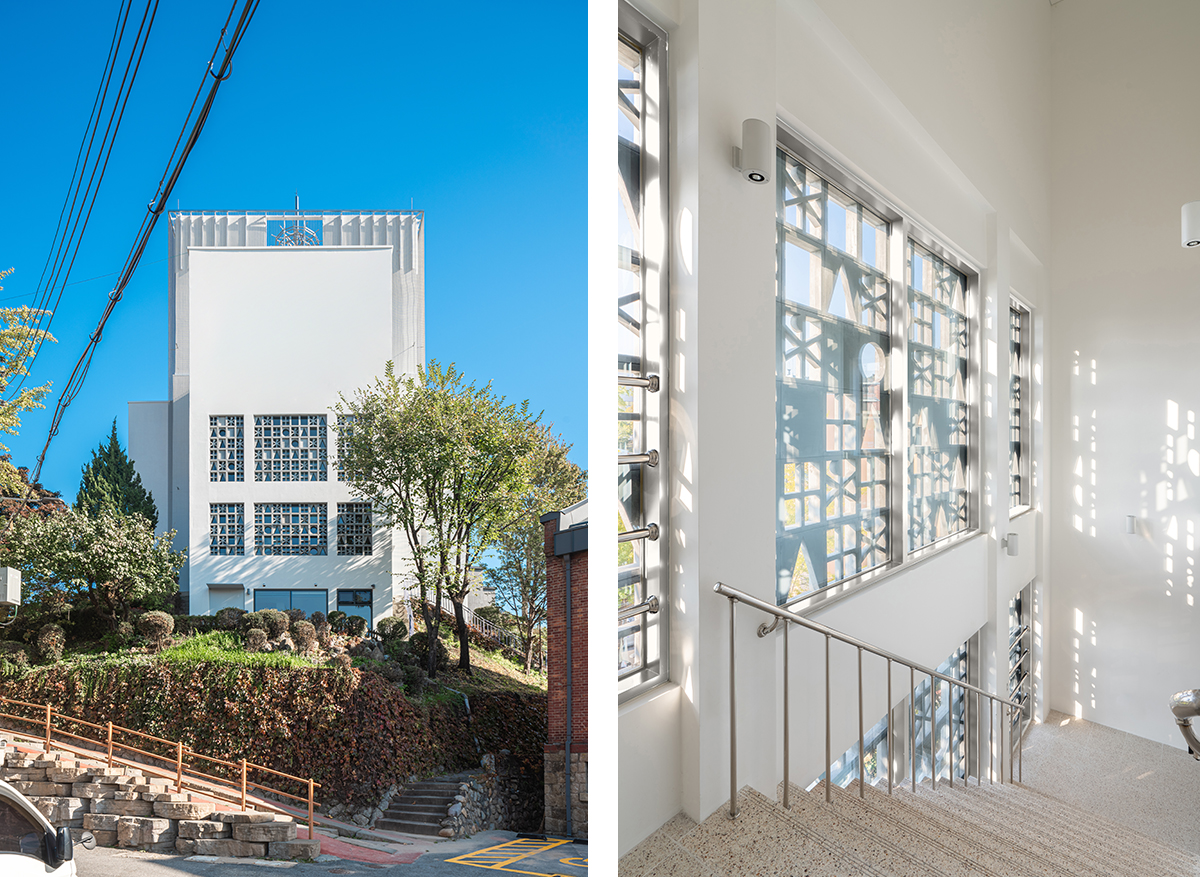
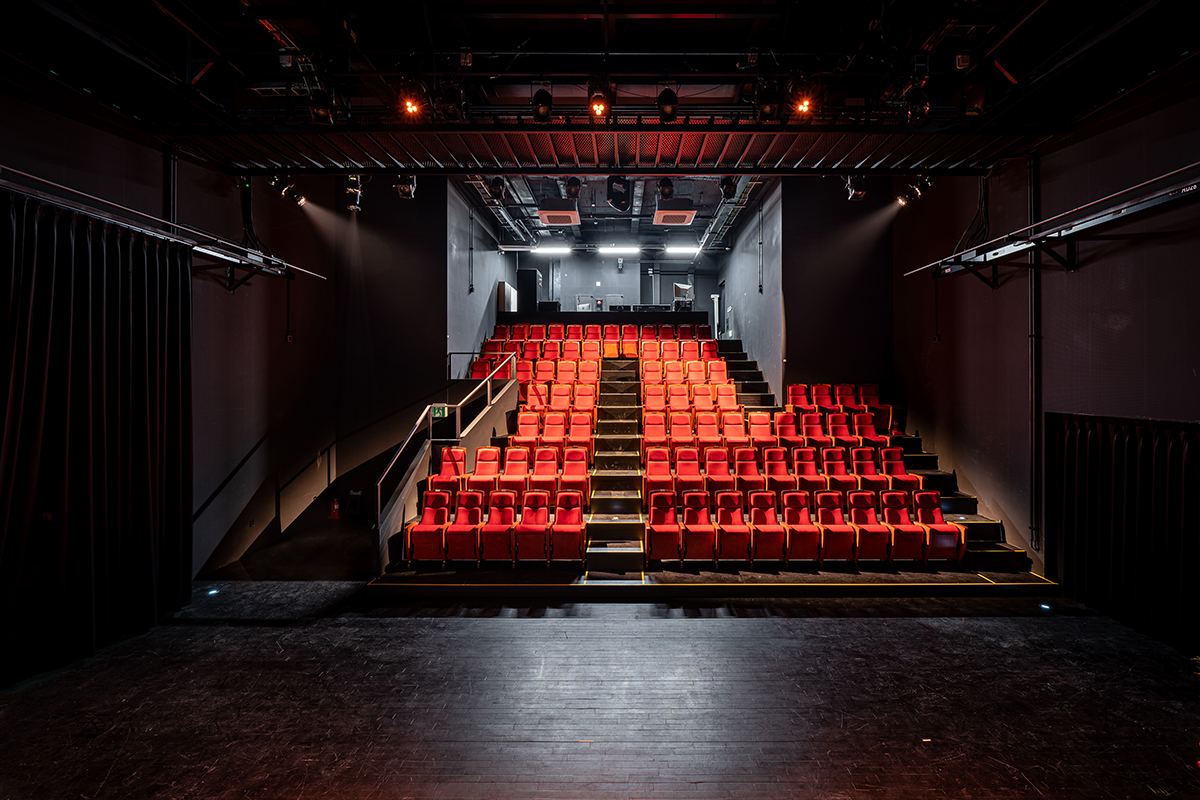
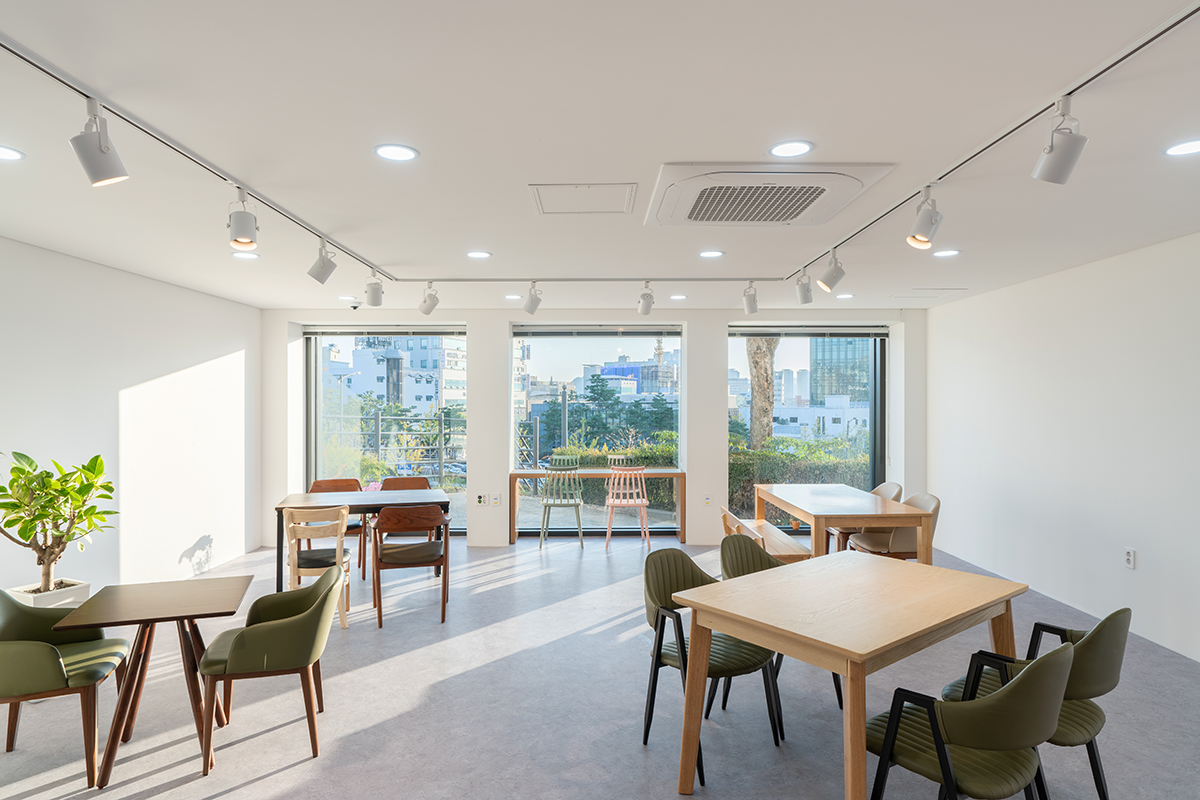
Multi-purpose Complex Cultural Space
Bomnae Theater, as a low-budget small theatre remodeling project, attempted to introduce the concept of a black box theatre that would change the shape of its stage according to the intentions and needs of the director. The competition proposal, though not realised, offered a plan to introduce removable theatre seats for various arrangement of seats and stage. In consideration of various movements of performers, an external staircase that connects directly from the stage to the outside was added on the north side to extend performances to the outdoor plaza. In addition, multi-purpose dressing rooms were added to solve the shortage of space for performance support. A newly added elevator helps to the efficient delivery and removal of equipment and improves access and circulation for disabled staff and audience members and in stage production. The existing Bomnae Theater had no lobby space for the audience, as the second floor performance hall was directly connected by an outdoor staircase. The halls on the first and second floors which had long gone unused have now been transformed into a large lobby space, which improves the entry. The audience can experience the entire space of the building as they enter the theatre through the lobby and entrance space. The lobby acts as a place for exchange between the audience members and between the audience and performers, which allows an expansion of their experience before and after a performance. A lounge on the first floor is being used as a warm up space for performers and for workshops as well as a complex cultural space for citizens. This is a rest space for everyone, and it can be used for various cultural and artistic activities like performances and art exhibitions. In this project, we tried to introduce a flexible space that would be able to accommodate experimental performance planning in a small theatre. Some of our aims were not realised due to the limitations imposed on all public projects, but I hope that Bomnae Theater will gradually change our perception of cultural space. (written by Park Chungwhan, Song Sanghun / edited by Bang Yukyung)
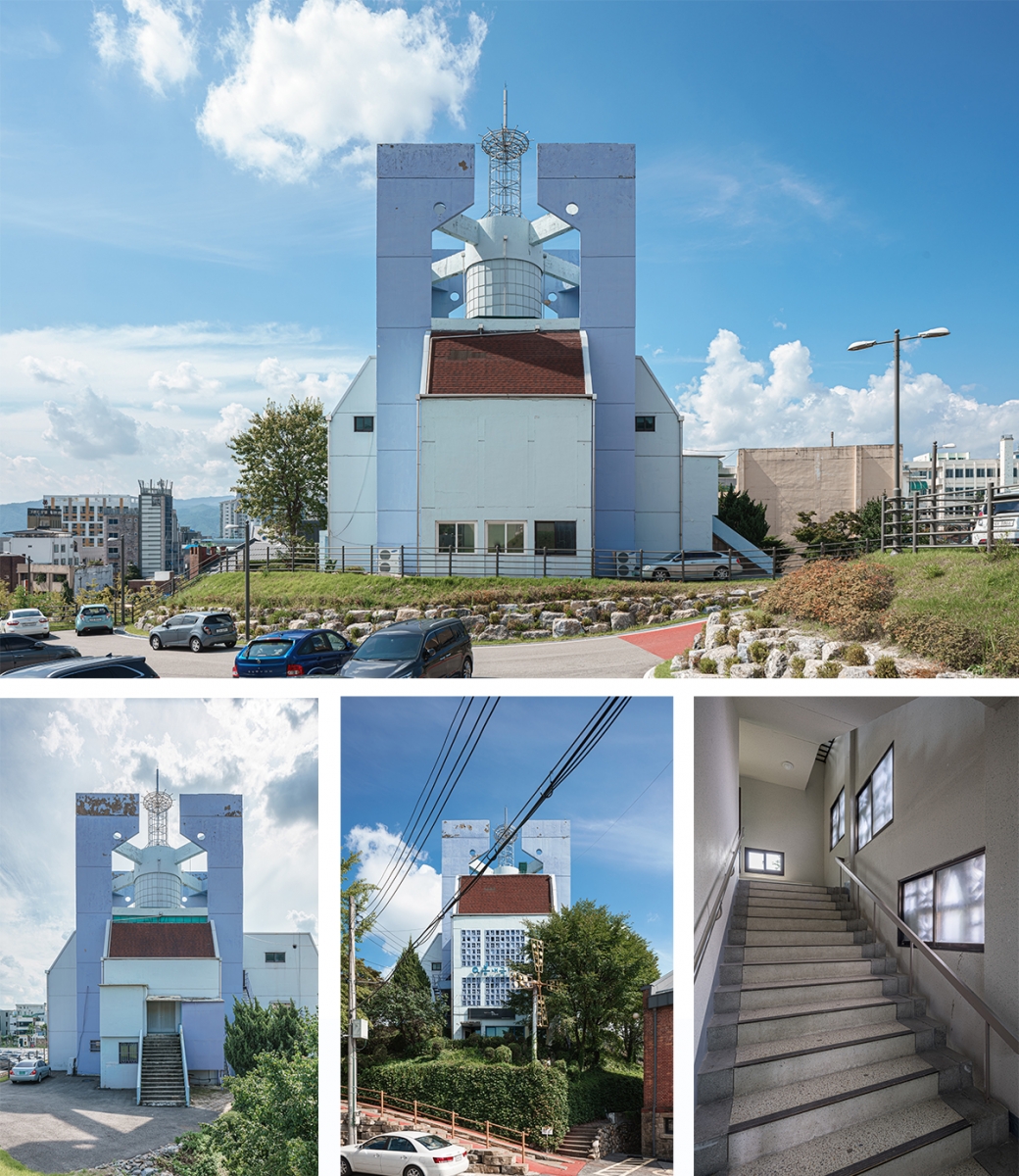 Before remodeling
Before remodeling
Simplex Architecture (Park Chungwhan, Song Sanghun
Jung Eunseon, Lee Hyunwoo, Jeong Seongwook
71, Seobudaeseong-ro, Chuncheon-si, Gangwon-do, Ko
cultural facility
3,242㎡
306.38㎡
748.82㎡
B1, 3F
21.7m
25.55%
63.8%
RC, steel frame
metal mesh, stucco, aluminum panel, Low-E glass
water based paint, noise free spray coat, tile, wo
LAIM Information Technology Co., Ltd
HANA Consulting Engineers Co., Ltd
Samsan Construction
Sep. 2019 – June 2020
Nov. 2020 – Oct. 2021
Chuncheon City
Ghost LX (Yoo Jeongsik)





